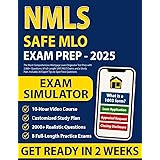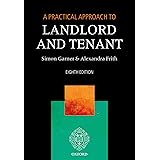The eternal debate in personal finance often boils down to a fundamental choice: real estate versus the stock market. Both asset classes promise wealth accumulation, yet they operate on different principles and offer distinct paths to financial growth. As discussed in the accompanying video, understanding the nuances of each is crucial for developing a smarter investment strategy, particularly when aiming for those coveted double-digit returns.
The Current Investment Landscape: Stock Market Optimism
Current market sentiment signals considerable optimism for equities. UBS, for instance, projects the S&P 500 to reach 5600, a significant jump from its recent 5300 mark. This forecast suggests an upside of approximately 5.6% to 5.8% in the near term. Such projections often stem from robust corporate earnings, technological advancements, and a resilient economy, even when consumer sentiment might feel less enthusiastic.
This outlook highlights the stock market’s potential for immediate gains. Investors can capitalize on market momentum and emerging trends, as seen with sectors like artificial intelligence. Missing out on these rapid shifts can mean leaving substantial returns on the table.
Unpacking Real Estate Returns: The Power and Pitfalls of Leverage
Real estate investors often champion their asset class due to the power of leverage. With a $100,000 down payment, one can acquire a $500,000 property, controlling a much larger asset than the initial capital suggests. If that $500,000 property appreciates to $550,000 in two years, the gross gain is $50,000. This seemingly translates to a 50% return on the initial $100,000 cash invested, far exceeding typical stock market returns on paper.
However, this calculation rarely accounts for all associated costs. Leverage amplifies returns in an upward market, but it also magnifies losses if property values decline. The significant debt used in real estate purchases necessitates careful consideration of risk and market conditions.
Understanding the True Costs of Property Ownership
While real estate boasts tangible assets and the potential for substantial appreciation, it comes with a complex array of expenses that erode net returns. The video correctly points out the impact of selling commissions, which can be as high as 4% or more of the sale price. In the example provided, a $50,000 gross gain could be reduced to a $26,000 net gain over two years after a $24,000 commission, translating to an annual return of about 13% on the initial investment.
Beyond commissions, property owners face ongoing costs like property taxes, which Thomas Ellsworth aptly describes as “rent you’re paying to the city.” Mortgage interest, insurance, maintenance, repairs, and potential vacancy periods for rental properties further diminish profitability. These recurring expenses mean the true, all-in return on investment for real estate often proves lower than initial appreciation figures suggest. Therefore, a comprehensive financial model must incorporate these hidden costs when comparing real estate vs stock market investments.
The Dynamic World of Equity Markets: Opportunities Beyond the Obvious
The stock market is a vibrant ecosystem teeming with diverse investment opportunities. While many focus on large-cap, well-known companies, the market also offers avenues in mid-cap, small-cap, and international stocks, alongside a growing array of exchange-traded funds (ETFs) that provide diversification. Staying static in one asset class means potentially missing out on significant growth sectors.
Consider the exceptional performance of the “Magnificent Seven” in 2023. Apple saw a 48% return, Microsoft 57%, Alphabet 59%, Amazon 81%, Tesla 102%, and Meta a staggering 194%. Leading the pack was NVIDIA, with an astonishing 239% return in just one year. As highlighted in the discussion, a $10,000 investment in NVIDIA seven or eight years ago would now be worth an astounding $3.1 million. These examples underscore the dynamic nature and immense upside potential within the stock market, driven by innovation and technological advancement.
Historical Performance: A Tale of Two Investments
When evaluating the long-term prospects of real estate vs stock market, historical data provides critical insights. The average stock market return has historically hovered around 10% year over year, occasionally reaching 20% or more. The video’s analysis of historical double-digit returns reveals a compelling trend: the stock market has delivered double-digit annual returns almost five times since the 1930s, outside of the pandemic period.
In contrast, real estate has only achieved comparable double-digit average annual returns once during the same timeframe – specifically, during the recent worldwide pandemic. This suggests that while real estate offers stability and tangible assets, its raw rate of return historically lags behind the stock market over extended periods, particularly when accounting for all associated costs.
The Indisputable Case for Diversification
The discussion wisely pivots to the importance of diversification, a cornerstone of sound financial planning. Rather than exclusively committing to real estate vs stock market, a diversified portfolio often includes a mix of stocks, bonds, real estate, precious metals like gold, and even alternative assets like cryptocurrencies, for those comfortable with the risk. This strategy aims to mitigate risk by not putting all your eggs in one basket, allowing different asset classes to perform during various economic cycles.
A well-diversified portfolio can cushion against volatility in any single market, providing a more stable and potentially optimized return profile over the long term. This balanced approach protects capital while still capturing growth opportunities across the economic spectrum.
Simplifying Stock Market Entry: The Power of Dollar-Cost Averaging
Many individuals hesitate to invest in the stock market, perceiving it as complex or difficult to time. With its “bulls, bears, bells, red, green, up, down” terminology, the stock market can indeed seem intimidating. However, strategies like dollar-cost averaging (DCA) simplify entry for non-expert investors. DCA involves investing a fixed amount of money at regular intervals, regardless of market fluctuations.
This approach eliminates the need to “time the market,” which even seasoned professionals struggle with. By buying more shares when prices are low and fewer when prices are high, DCA naturally lowers the average cost per share over time. It’s a disciplined, long-term strategy that leverages the market’s historical upward trend, allowing consistent wealth building without the stress of constant market monitoring.
Investing in Innovation: Betting on America’s Future
Beyond mere numbers, a powerful underlying philosophy drives many stock market investors: a belief in capitalism and innovation. As passionately articulated in the video, investing in the stock market means investing in the ingenuity and progress of businesses that constantly seek to improve products and services. This conviction stems from the idea that human innovation will always find a way to create value and drive economic growth.
This perspective transforms stock market investing from a mere gamble into a vote of confidence in economic progress. The story of the 99-year-old grandmother, who despite her age, insisted on buying growth stocks, exemplifies this enduring faith in future returns. This long-term vision emphasizes betting on companies that embody the spirit of progress and adaptability, characteristics that consistently fuel equity market expansion.
Navigating Inflation: Conservative Approaches to Wealth Building
In times of inflation, choosing between real estate vs stock market requires careful consideration. Inflation erodes purchasing power, making it crucial for investments to outpace rising costs. While real estate can act as an inflation hedge due to property value and rental income increases, it also involves substantial long-term debt, which becomes more burdensome with higher interest rates.
Thomas Ellsworth advises “conservative living” and caution against “overextending yourself” during inflationary periods. This means meticulously examining housing costs, whether renting or owning. He suggests viewing property tax and mortgage interest as “rent on dirt” and “rent on money,” respectively. Understanding these foundational costs helps in making prudent decisions and ensures that investment choices align with a broader strategy of financial stability and growth.








